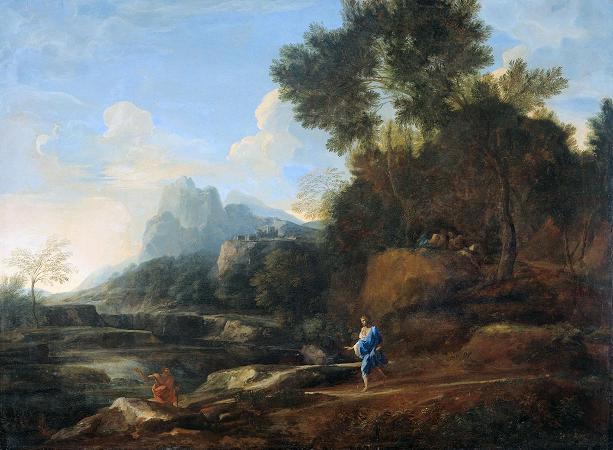Peter Tillemans (1684 - 1743). Peter Tillemans was a Flemish painter, best known for his works on sporting and topographical subjects. Alongside John Wootton and James Seymour, he was one of the founders of the English school of sporting painting. From 1708 until his death he lived and worked in England. Tillemans was born in Antwerp in c. 1684, the son of a diamond-cutter, and studied painting there under various masters. As he was the brother-in-law of another Flemish painter, Pieter Casteels, it is assumed that he married before leaving Antwerp. Like other artists from the Low Countries such as Dirk Maas, Jan Wyck and Willem van de Velde the Younger, Tillemans moved to England. In Tillemans's case he moved in 1708, induced to do so by a picture-dealer called Turner: he spent the rest of his life working there. In his Sportsmen in a Landscape, Aubrey Noakes offers this description of Tillemans: If we may judge from his success Tillemans was a socially agreeable and charming man. A portrait of him reveals that he was a gentle, friendly-looking fellow, with long curling hair, presumably his own and not a wig, such as was commonly worn by members of the upper and professional classes in the late eighteenth century. A chronic sufferer of asthma, Tillemans retired to Richmond on account of his ill state of health. He died at the house of Dr Cox Macro in Little Haugh Hall, in Suffolk, on 5 December 1734 and was buried on 7 December at Stowlangtoft. His collection of paintings had been sold in an auction conducted by Dr Macro on 19 and 20 April 1733 and included paintings by James Tillemans, probably a son or other relation, and by Arthur Devis, who, like Joseph Francis Nollekens, was one of Tillemans's pupils. Dr Macro had a bust of Tillemans made by John Michael Rysbrack, placing it in a niche at the top of a staircase in Little Haugh Hall. A portrait of the artist, engraved by T. Chambers, from a painting by Hissings, is given in Fuseli's 1805 revised edition of Rev. Matthew Pilkington's A Dictionary of Painters. Tillemans was brought to England in 1708 by Turner, a picture dealer; his first works were copies of battle scenes made for Turner, particularly of the works of Jacques Courtois, as well as small genre pictures. He enjoyed much success imitating the style and execution of David Teniers. Tillemans worked in many different styles and rarely dated his work. After at first working as a copyist, he quickly made his name, and among his first important commissions in England were two paintings of the interior of the Palace of Westminster, one of Queen Anne in the House of Lords, the other of the House of Commons in session. By 1711 Tillemans joined Godfrey Kneller's Academy of Painting and Drawing in Great Queen Street, London, stating his speciality as landskip. His main residence was in Westminster but he travelled extensively on commission. Dr Cox Macro, his most faithful patron and the one for whom his work is best documented, gave him commissions, including battle and hunting scenes, landscapes, renovation work, and portraits from 1715. In 1716 Tillemans repainted part of a portrait of Dr Macro by Frans van Mieris from around 1703, making alterations to his face. That year he also painted Dr Macro in the background of The Artist's Studio, a self-portrait, with a pupil and Dr Cox Macro, surrounded in the studio by paintings. In 1717, his conversation piece of the royal family making music was shown at the Bartholomew fair. He was commissioned in 1719 by the antiquary John Bridges to make about 500 drawings for a projected history of Northamptonshire, and some of these were later published in Peter Whalley's History and Antiquities of the County of Northamptonshire. His other patrons included the Duke of Devonshire, the 4th Baron Byron, and the Duke of Kingston. His highly accurate eponymous painting of the Battle of Glen Shiel in the Scottish National Portrait Gallery, painted in the same year as the battle, was originally catalogued as The Battle of Killiecrankie 1689. The greater part of Tillemans's oeuvre was painted from approximately 1720 onwards, and it is from the works painted over these years that he chiefly derives his fame. During the early 1720s, Tillemans moved successfully into the field of painting dogs, horses and racing scenes and was one of the earliest painters of sporting scenes in England; four of these works, engraved by Claude du Bosc and published in 1723, are among the most spectacular early sporting prints in England.
more...











